Ultimate February Home Safety Checklist: Stay Warm & Secure
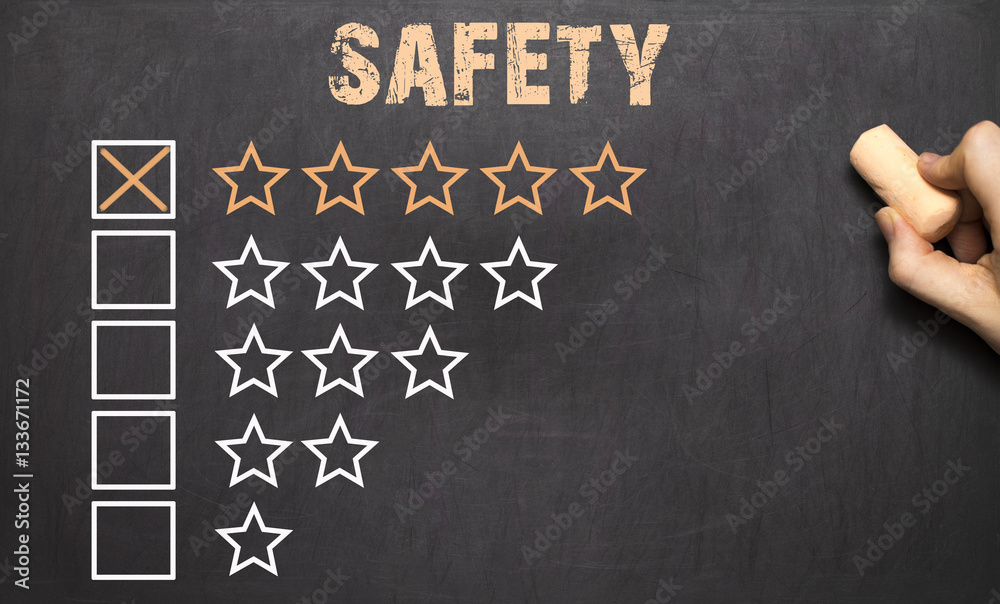
A Home Safety Checklist You Can Use Year Round Every year, we make resolutions like helping others or losing weight. However, some people forget about home safety. This is an important resolution, and it’s not too late to make it, as the year is still early. With a good home safety checklist, you can get through even the harshest part of winter. Below, you’ll find a home safety checklist you can use in February and year-round to make your home as secure as possible. Bedrooms and Other Living Spaces Practice an emergency plan with your family and create escape routes for everyone. Run through this escape route at least once a month so everyone knows it well. Make sure you have flashlights with working batteries in every storm kit. This way, you’ll be ready if snow or a general power outage knocks out your power. Hallway Test your carbon monoxide and smoke detectors. If you have a home security system, remember that many include built-in detection for both. This means authorities are alerted even if you’re not interacting with the system when these dangerous elements are sensed. Make sure your fire extinguishers are full. The needle must point to the green zone. If it’s not, it’s time to replace or service the extinguisher. Also, check that the hose isn’t cracked and that the handle and locking pin are in place. Kitchen Keep a contact list on your refrigerator. Include all important numbers like Poison Control, your doctor, emergency services, and close family members. Check your range’s hood fan for grease buildup. This can cause a fire, so clean it regularly to ensure it works properly. Also, check your kitchen fire extinguisher to confirm the needle is in the green zone and that nothing is broken or out of place. Give your oven and range top a deep clean. For your garbage disposal, use vinegar, baking soda, ice, hot water, and some lemon or lime to clean it thoroughly. Basement Make sure you clean your circuit breaker to avoid outages and power surges. Also, cover your pipes properly to prevent them from freezing. If your basement temperature drops below 32 degrees, you risk frozen pipes. Remember to change your furnace filters every four to six weeks. Furthermore, dust your air vents regularly. Inspect your basement for cracks, leaks, or mold that could cause health hazards or other dangers. Finally, ensure any outside doors to your basement are secure. If you’re installing a security system, put a sensor on the outside basement door. This helps even if a thief would also need to go through an interior door to get into your home. Bathroom Make sure your first aid kit is full. Make sure windows have locks and that they are locked. This is something you should check throughout the entire house. Outside Check your outdoor lighting. Good outdoor lighting helps you and your visitors see where you’re walking. It also deters burglars. If you don’t have outdoor lights, get some installed. Motion lights are excellent additions. If you lack outside video surveillance, consider adding it. You can see everyone who comes to your home. This helps you identify unwelcome visitors. Additional Home Safety Checklist Items You can make your home safer with many steps, but checking fire extinguishers or cleaning garbage disposals won’t keep thieves away. Unfortunately, burglars break into homes daily across Rochester and all over New York, often because those homes lack security systems. This not only means losing belongings but also losing your sense of personal security. Contact Your Rochester Security System Installer and Finish Your Home Safety Checklist To make your home more secure, SPS Fire & Security offers a full suite of solutions. Just call us and ask about the best option for your home and your needs. Call us today at 585-770-0348 to learn more!
Children and the Internet: Another Type of Home Security

Children and the Internet: How to Keep Your Kids Safe Online You might not typically link children and the internet with home security, but they are connected. Recently, a very disturbing video of a young girl ending her life circulated online, and many young children across the nation accessed it. Because of this, many schools sent letters to parents. They stated they are doing everything possible to protect children by controlling what they see online. As parents, we can’t be with our children every minute. However, you can take many steps to ensure your child’s online safety during computer use. This helps prevent them from ever seeing another disturbing video. Children and the Internet: Teaching Children about Online Safety Online safety is another measure in home security because of the information that can be relayed on the internet. The most important rule for online safety for children is to set up a time with how long that children can go online. Your children should never give out personal information to anyone or at anytime. Giving out any information should be the decision made by the parent. Never give out your passwords to any one other then parents. Never allow children to post pictures without approval from the parents. It happens and people find a way to use pictures as a source to find out where you or your children are at. If messages come across the computer and you don’t know who the person is, don’t respond. Your child should close the opened app or window and tell an adult. Before downloading any software that might damage the computer, children should ask parents first. What Parents Can Do with Children and the Internet’s Risks If you have young children that are using the computer ,you want to do the following things to protect your children and the computer: Set up security guidelines (block all sites your children can not go on) on the computer. Your children should only be on age appropriate websites. Set up a timer to measure the length of time your children is on the computer. Some software programs have a timer that will allow the computer so shut off after a certain length of time. After your children has been on the computer, always be sure to check the browser history to see where your child went to. If you are not home and you don’t want your children to have access to the computer until you get home, there are ways to add a password to the computer. Make the password something that your children will never figure out. Contact Your Rochester Home Security Company This article gives you tips on how to deal with children and the internet. We, however, can make your home safer. Contact SPS Fire & Security at 585-770-0348 to find out how you can make your life more secure.
Your Airport Safety Tips: What You Need to Know
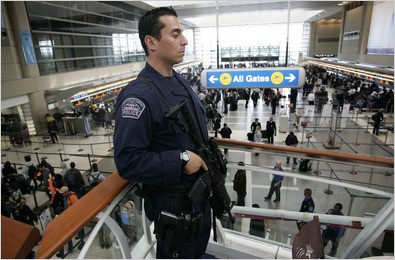
Stay Safe While Traveling After hearing about Rochester International Airport receiving suspicious bomb threats on Thursday December 29, 2016, people who travel by plane should take airport safety tips seriously. These tips will assist you in making sure that you have safe travels. Keep Yourself Safe at Home as Well! Many people were either coming to the airport or just getting ready to board or get off their flight. Report from the news says that many did not expect to come to the airport to see that the roads blocked off and hear that they would have to wait to even get in. Airport Safety Tips First, follow instructions from authorities. They will arrive quickly to handle the situation. Next, avoid touching or opening anything suspicious, like the unattended bags at Rochester International Airport. Instead, let trained professionals inspect those items. T hen, stay calm if you get separated from family or friends. You will reunite once the situation is resolved. Finally, watch your belongings closely, including luggage, bags, and any young children traveling with you. One incident at a local airport shouldn’t ruin your travel plans. Instead, stay alert and follow safety tips when you or a loved one travel. Ensure Personal Security Through a Security Alarm Company Don’t forget to contact your security company to give them a heads up that you and your family will be away from home so if anything goes wrong at home you can be contacted in a timely fashion. Call SPS Fire & Security today at 585-770-0348 for a free consultation.
Car and Home Security in Rochester

Keep Your Car and Home Safe No matter where you plan on parking your car, you should never leave valuable things inside. It doesn’t matter if you are holiday shopping, at a friends or relatives house, or at your own home, break-ins, whether it would be in a car or home, can lead to valuable items being taken and for identity theft. In the last few days, there have been many posts on social media about car break-ins in and around Rochester. One of the individuals that had their car broken into had their groceries (soda and Gatorade) stolen, and then another individual had their expensive hunting gear taken. All of this was done while the cars were parked in their driveways. Now let’s talk about security at your own home for your car. What is the best type of security to have if your neighborhood or any surrounding neighborhoods have a high number of car break-ins? If you must leave valuable items in your car overnight or for a long period of time, there are some security tips and equipment that you can buy to protect your car. 1. Car Alarm System The smartest first step when buying a car is to choose one with an alarm. If your preferred car lacks one, have a professional install it. A car alarm sounds when someone opens the driver’s side door without keys in the ignition. 2. Motion Sensors Motion sensors are an important aspect of home security because they can detect when there is movement in a certain area. These lights will turn on when someone or something is moving near the sensor. 3. Video Surveillance Your security company can install a video surveillance system. This system lets you use your phone or computer to see any activity at your home. For example, if many people visit and someone breaks into your car, you can check the footage. It will show you what happened. Using video surveillance is smart, but you can do more to protect your car in the driveway. Don’t leave things in plain sight that tempt people to break in. Make your car a harder target. Contact An Expert Security Alarm Installation Company Interested in a security system Want to upgrade yours? Call SPS Fire and Security at 585-770-0348. We’ll help you find the best alarm for your needs.
Ultimate Car Kit Guide: Stay Safe on the Road
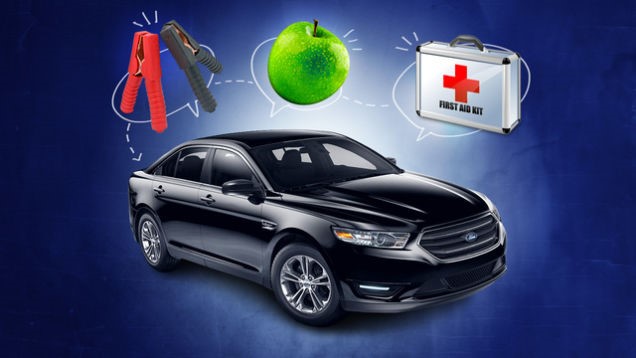
Keep Yourself Safe on the Road All Year Round The thought of getting stranded or running out of gas leaves a nervous feeling in many of us. It affects our sense of security. There are Multiple things that you can do to make sure that your automobile is well-maintained. What’s inside your car plays a key role as well when preserving your sense of security. Below is a list of ten of the most popular items that you would want to have in your automobile in case of an emergency: 1. Fully Charged Mobile Phone With technology these days, having a fully charged cell phone on hand is the quickest way to get in contact with someone. Some cars don’t charge cell phones while they aren’t running. If you notice that your phone is low on battery, charge it while driving. 2. Jumper Cables You come out from work, put the key in the ignition and your car doesn’t start. What do you do next? The smartest thing that you can do when finding a parking place at work or at any store would be to park where another car can park in front of you. Never pull through because it makes it harder for any one to help you out. Plus, it blocks car drivers from backing out. 3. Flashlights Flashlights come in handy for when you need to check under the hood or if you get stranded when it is dark outside. Again, your sense of security is very important. 4. Roadside Flares Roadside flares are the best form of light signals to have when it is dark out and you are on a busy road or thruway. Many people won’t see you or your car right away if it is a dark color. Having the roadside flares will allow other drivers to see you and your car ahead of time and give them enough time to move over to another lane, if possible. Keeping jumper cables in your automobile in case of an emergency, may not only keep you safe but others as well. 5. Blankets You should have one blanket for every person that is in your family. Even though you are in the car where it might be slightly warmer than it is outside, you want to be sure that everyone in your car is warm, especially if you have little ones. 6. Bottles of Water Keep one or two bottle of water for every person that is in your family. You never know how long you are going to be stranded for. Water is better for you and lasts longer than juice or soda. Keeping water in your automobile in case of an emergency, not only can keep you safe, but you could also use it to help another person or animal. 7. Food Granola bars are always a good food to keep in your car. Like Water and Blankets, you should keep one to two per person in your family in the car. 8. First Aid Kit Whether it is cleaning up a head wound from scattered glass or cleaning a boo boo for your three-year-old, a good stocked first aid kit always comes in handy. The first aid kit should have bandages, white tape, gauze, cotton balls, medical gloves, Neosporin, and anything else that you would think would be helpful during a medical emergency when on the road. Having a first aid kit in your automobile in case of an emergency, could keep someone safe until more help arrived. 9. Ice Scraper It is 5am and you are outside in the cold scraping your car windshield with a credit card. That is not always a good idea. Having a least two scrapers in your car would benefit you just in case one of them breaks. 10. Gloves (both work and winter) Both work and winter gloves are key essentials to your car kit. Winter gloves are not going to be safe if you need to check under the hood of your car. Buy safety work gloves in case you or someone in the car with you knows what it is that can be fixed under the hood. No matter what season (winter, summer, spring or fall) it is, always revamp your car kit based on the season. Sometimes you might not need the winter gloves or ice scrapers anyway, but you need extra water bottles because it is 90 degrees outside and there is always the possibility you’ll break down. When taking things out of the car kit, make sure that you have a bin to place all your off-season car items so you know exactly what it is that you took out. This keeps you equipped and organized. Contact Your Rochester Security Experts All in all, having a car safety kit is one of the most important things you can do for you and your family. You never know what is going to happen on your daily routine. Keep your insurance information and a good reliable towing service number handy in case of any emergency. To extend safety measures to your home, SPS Fire & Security can help you. Call us at 585-770-0348 to learn more.
Identity Theft Shield: 5 Ways to Secure Your Information

How to Protect Yourself from Identity Theft Many people over the years have found that with the busyness of family gatherings, it’s so much easier to do their holiday shopping online. Unfortunately, identity theft via a computer or internet is the easiest way to gain access to an individual’s identity. Yes, just like a home alarm system keeps out burglars, anti-virus and anti-malware software can keep out thieves. Nonetheless, you have to take precautions. Below, you will find five ways to avoid identity theft when using your computer to make online purchases. Also remember that identity theft can also occur if a thief breaks into your home and takes personal documents. Having an alarm system in place will help prevent this from happening and, if it does, video surveillance is a great way to identify the perp. 1. Pay Close Attention to Accounts for Signs of Identity Theft Always make sure that you are watching your bank and credit accounts. If you notice any unusual activity, make sure that you report it right away. 2. Never Give Out You Social Security Number Most banks and credit card companies ask for the last four digits of your Social Security number. However, only give it out if you already have an account with them. Otherwise, a thief can easily get your account details. Instead, ask for a callback number. Then, you can call them back yourself to give your information. This way, you ensure you’re really talking to your bank or credit card company. 3. Make Sure to Shred All Papers with Personal Information Get a paper shredder if you don’t have one. It’s a smart buy. Shred all papers with your personal details. This means things like account numbers, part of your Social Security number, and your address. Why? A thief can break in and steal this info to commit identity theft. So, putting in an alarm system can really scare thieves away. 4. Make Passwords Secure to Avoid Identity Theft Never make passwords words or characters that someone could easily figure out. Plus, don’t write your passwords down and leave them around the house so that anyone could get them. Make your passwords words and characters that only you know and don’t give out your passwords to anyone that you don’t trust. 5. Use Protection On The Computer to Avoid Identity Theft If you do a lot of home shopping from your computer, make sure that you have some computer security installed. Some proper security that you could install on your computer would be firewalls and spyware. Each one of the programs can keep your computer and identity safe from viruses and hackers. Make sure that the programs are updated before shopping online to secure that you have the best safety. Having knowledge of identity theft could save you from any harm happening to you this holiday season. One other way to protect not only you but your children is to teach them about identity theft. Teach your children not to give out any information to anyone that they don’t know or to anyone online. While identity theft is certainly something to watch out for during the holiday season, it defiantly should not keep you from doing your holiday shopping at your own comfort of your home computer. By following these tips, you can continue to enjoy the internet from just about anywhere. And don’t forget that an alarm system is also a valuable component in avoiding identity theft. Protect Yourself from Identity Theft Better with SPS Fire & Security Although SPS Fire & Security is a home and business security alarm company, our services can keep burglars out that can steal your personal information. Unfortunately, thieves will acquire credit cards, social security cards, and important documents for the purpose of committing identity theft. To learn more about how SPS Fire & Security can help you, call 585-770-0348 for a free consultation.
Keep Valuables Secure with Home Security Methods
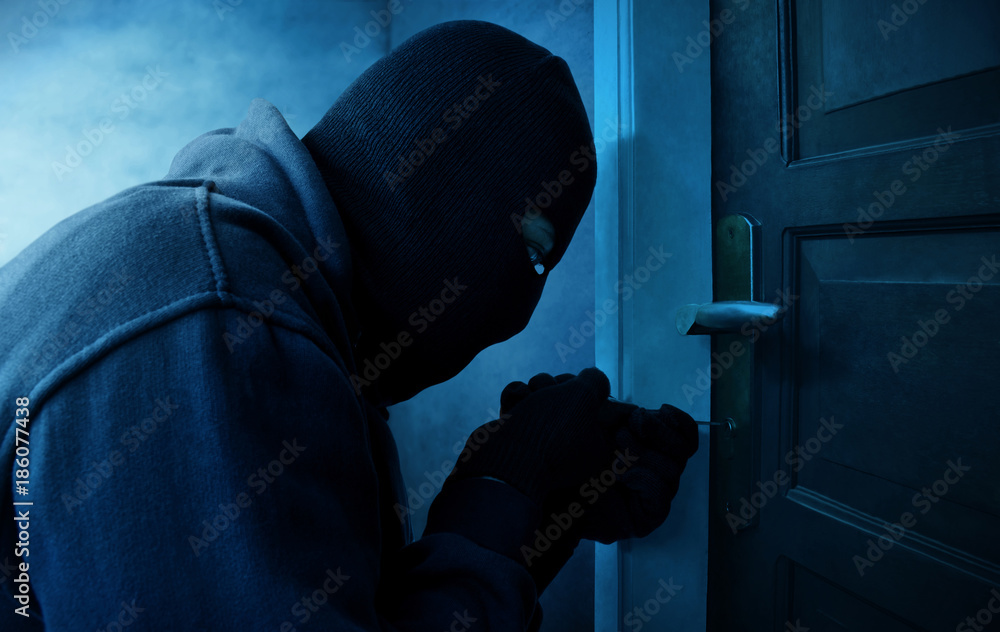
Protect Your Most Important Items We automatically assume that our homes are the safest places for our valuables. This means putting things wherever they land instead of locking them away. Jewelry, for instance, may be stored in an unlocked jewelry box. Important documents that contain valuable information may be placed in a desk drawer or a file cabinet with no locks. Despite how secure you feel at home or how intense your home security methods are, you can never be too safe when protecting those personal belongings that are worth much more than what you paid for them. The following are some tips on how to keep your most valuable items safe: Keep Documents in a Safe Lock up important papers like insurance documents, Social Security cards, birth certificates, diamond ring paperwork, passports, tax returns, and other identifying documents. Thieves often search unlocked file cabinets and desks to steal these papers, which can lead to identity theft. Invest in a Home Security System No matter how many chain locks or deadbolts you have, a skilled thief can still get in. Unfortunately, many locks can’t do what a home security system can: alert the police when someone breaks in. Video cameras can capture their faceand even show what they stole, even if they get past the alarm sound. Often, a thief won’t continue once they hear the alarm go off. Don’t Hide Your Spare Key Outside This is another area where an experienced thief is going to win. They know where to find those keys that are hidden under rocks, over top of door facings, around bushes, or under that flower bed ornament. Just don’t do it. Keep a spare with a trusted neighbor or friend. Keep Jewelry in a Safe Lock your valuable jewelry, like Grandma’s pearls or your most expensive pieces, in a safe. Thieves often look first in the master bedroom for jewelry left out or in a locked jewelry box. Many times, they just grab the whole box and run, so they can sort through it later. Video Surveillance We talked about video surveillance before, but it’s worth mentioning again. You can’t lock your flat-screen TV in a safe, and many electronics are light enough for thieves to easily steal. However, even if a thief keeps going after your alarm sounds, you can catch their face on video. It’s amazing how many burglars get caught because of good video surveillance. Forget the Mattress The mattress is another hot spot thieves will look. If you hide money or other valuables under your mattress, you can expect a burglar to find them. Kitchen Items Belong in Cabinets It’s tempting to hide things in those high kitchen cabinets. But burglars know this trick too. They also know your “junk drawer” might hide something valuable. Even if your kitchen has many drawers, expect a thief to search them, especially if no security alarm shortens their time to rummage. That Small Safe is Not a Good Investment Buying a safe is a great idea. It’s one of the best investments you can make. A good safe is secure and fireproof, protecting your belongings. However, a small safe won’t help if it’s not bolted down. You should buy a large safe you can bolt to the floor. It would be a huge pain for a burglar to unbolt a large safe. Plus, it would be too big for them to carry. They’d need a dolly to wheel it out, but even that’s almost impossible because of its weight. Also, someone would probably see them wheeling a safe out of the house, and they’d likely need several people. A giant safe just isn’t worth a burglar’s trouble. So, here are tips to keep your valuables secure. Even with a home security system, which usually stops burglars right away, don’t leave anything out that they can grab quickly. Yes, your home is safe, but anything can happen when you’re not there. It’s better to be safe than deal with a thief’s actions. Contact An Experienced Security Alarm Company Today SPS Fire & Security cares about you and your belongings. To protect what is important to you, a quality and affordable security system is the answer. To learn more, call today at 585-770-0348 for a free consultation.
Safety on Social Media: Unlocking Secure Travel Posts

Watch What You Share On Social Media Platforms Safety when posting on social media when going on vacation should always be at the forefront of everyone’s mind. Once again, school gets in session and there are many holidays that follow. There is Columbus Day, which has a three-day weekend for some; Thanksgiving; and Christmas, which can have a week or more of vacation. Each one of those holidays is about a month apart and takes a lot of planning. Starting with Columbus Day, many families will take a small three-day vacation to catch their breath from all the hustle and bustle of life. Some might go camping for the last time or just go to a family spa resort for some downtime. Safety on Social Media During the Holidays Thanksgiving and Christmas are two of the biggest holidays where you have families that are traveling to see other families, whether it be in another town or in a different state. As much fun as we have during all three holidays, we have to be careful of what we post on social media. So many people look to social media as a way to communicate to their friends and families. While that is a good idea, it is also a good place for a burglar to grasp that your home is not being protected by another person or remote security monitoring. This is why safety on social media while on vacation is such a major issue. Social Media Tips for Protecting Your Home As a homeowner who loves social media, what can you do to protect your home? Many of us try not to use social media while on vacation so we can have family time. However, we know that doesn’t always work. You can choose not to go online at all. Alternatively, uninstall apps from your smartphone that could show your location. Of course, not bringing your phone at all is impossible, as your phone also helps keep you safe. You can also use your phone to remotely monitor your home security through a special app. Here are some tips to help you out: 1. Go on Vacation Quietly Don’t announce your trip on social media. Many of us like to share when and where we’re going on vacation, but that’s a bad idea. We might want feedback on local activities or events, however, you should still be careful. Safety on social media when you’re away is a top priority for most families. It doesn’t have to ruin your fun if you follow some simple rules. When you and your family are on vacation, don’t post any information or pictures until you get home. If you post on sites like Facebook, Twitter, Instagram, or others, burglars can use that information to target your home. 2. Stay Safe On Social Media When Going On Vacation If you must post on social media, consider who sees your accounts. Then, secure your profile. Smartphones have GPS trackers, so if you have yours on, turn it off. You usually find this setting under your phone’s location settings. Staying safe on social media during vacation should always be a priority. When your mail piles up for a week, your home becomes a target. This shows everyone no one is home to get the mail. You can ask the post office to hold your mail. Also, tell your newspaper to stop delivery for the week you’re away. If you don’t want to do this, make sure a friend, neighbor, or family member gets your mail daily. You may also want to put your lights on a timer. And, ask a friend, family member, or neighbor to watch your home. If you know anyone trustworthy who will house sit, that would be excellent. 3. Don’t Post at All or Overpost Don’t check in to any location on your Facebook or Instagram. If you don’t want that to happen, you need to turn the location GPS off so it doesn’t automatically locate you. Plus, you don’t have to post every picture that you take while you are on vacation. Save all your photos and post the best ones when you get home. The more you upload to your accounts, the more you are leading a burglar to know that you are away. These are all great ways to stay safe on social media when going on vacation. The less you say, the more you and your home are staying safe. 4. Contact Your Security Company When you and your family are going to be away from home for an extensive period of time, contact your security company. If there is any unusual activity that comes through to your security company, they will get in contact with you and you can verify that it is someone that you know at your home. 5. Opt for Remote Security Monitoring You are going to feel a lot better if you can keep an eye on your home while you’re away. You can keep track of your security system and even video surveillance through your smartphone on vacation so that you know everything is okay. As we start planning our upcoming holiday vacations, let’s take a few minutes to think about what we want to come home to. We could either come home to a place that was well-kept and watched over by someone that is responsible or we could come home to our place being broken into. It all leads to what you post on social media. Staying safe on social media when going on vacation, is something many of us don’t think that what we post on the internet through our Facebook or Instagram accounts is going to affect us later. Some individuals will get lucky to not have their home broken into, but others won’t be that fortunate. Safety on social media when on vacation is an area that takes little time and effort, but has great value to protect your home. Protect Your Rochester, Syracuse, or Buffalo
Back to School Bus Safety: Ultimate Tips for a Safe Journey
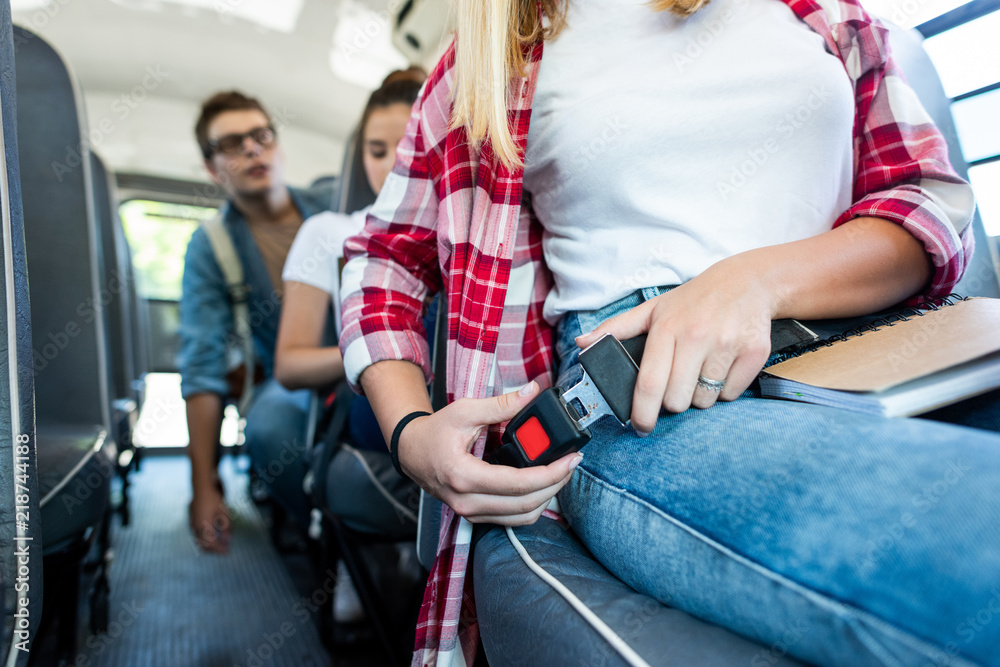
Keep Your Kids Safe All Year Believe it or not, school buses are the safest way for children to get to and from school. Each year, the bus drivers are required to give school bus safety drills for knowing how to get on or off the bus and the proper behavior during the bus ride. This is an important security measure because what makes the bus unsafe is when your child(ren) or other children on the bus are not following the safety rules for getting on and off the bus or how they are supposed to behave during the ride. As kids get ready to wait for the bus they get excited because their friends that might not be in their class at school are on the bus. Upon the bus arriving to the house, there are many school bus safety tips that the children should know. It is very important to follow the rules to avoid any traffic-related accidents with the school bus or injuries that might happen while on the bus. Bus Safety: Practice Makes Perfect Young children might not understand bus rules. These rules differ from family car rules. However, you can help! Practice school bus rules in your car. This helps your kids learn what to expect for school. Waiting for the School Bus: Safety Tips Many kids wait for the bus in their driveway. Some go to a bus stop. No matter where they wait, the same safety tips apply. When waiting, children should not stand near the road. When you see the bus coming, they should not rush. Instead, they must wait for it to stop fully. Once the bus stops and doors open, children should get on. They must use the handrail on the left. If more than one child gets on, don’t push or shove. How Children Should Behave on the Bus Children on the bus must respect safety rules. These rules keep them safe. No parent wants a call about an injury. If a child gets hurt, they should tell the bus driver right away. Once on the bus, children should find a seat fast. They should look for an empty seat or one with just one person. For safety, two people per seat is good. Three is the most allowed. More than three can be dangerous. If your child sits in a seat and a friend is nearby, they should not yell. Instead, they should talk quietly, like in a classroom. To avoid injuries, children should not stand in the aisle. Their backpacks should not be in the aisle either. Sometimes, kids bring instruments or sports gear. If this happens, they should find an empty seat for both themselves and their large items. When your child reaches school or home, they must stay seated until the bus stops completely. Once it stops, children can carefully and quickly grab their things. They should then walk to the front in a single line. At the bus stairs, they should use the handrail on their right. You never know if stairs are slippery or wet. Outside the School Bus: Safety Tips After your child gets off the bus safely at their stop, never do a few things. These tips keep all children safe. First, if your child forgets something on the bus, they must never turn around. They should not walk back to the bus. The child should go straight to a parent at home. If it’s homework, the parent can call the bus garage. They can get the item. Otherwise, it can wait until the next school day. Bus drivers walk through the bus to clean it. If your child must cross the street in front of the bus, the driver will tell them how far to stand. Often, a driver will say to walk to the mailbox. Other times, if no mailbox is there, the child should stand ten steps from the front of the bus. Once your child stands at the crossing spot, they need to look both ways (left, right, then left again). They must make eye contact with the bus driver. The driver will give a special hand signal to cross. If the driver waits a bit longer to let you cross, don’t cross on your own. The driver might see a car you don’t. Or, something inside the bus might distract the driver. No matter your age, or if the driver doesn’t know you need to cross, never cross behind the bus. That is completely unsafe for everyone. In Conclusion Knowing your bus rules makes riding any bus easier. Following inside and outside bus rules can stop many injuries. It also helps drivers get kids home safely. Be smart on the bus, and don’t play around.
Take the Fear Out of the Kids Walking Home
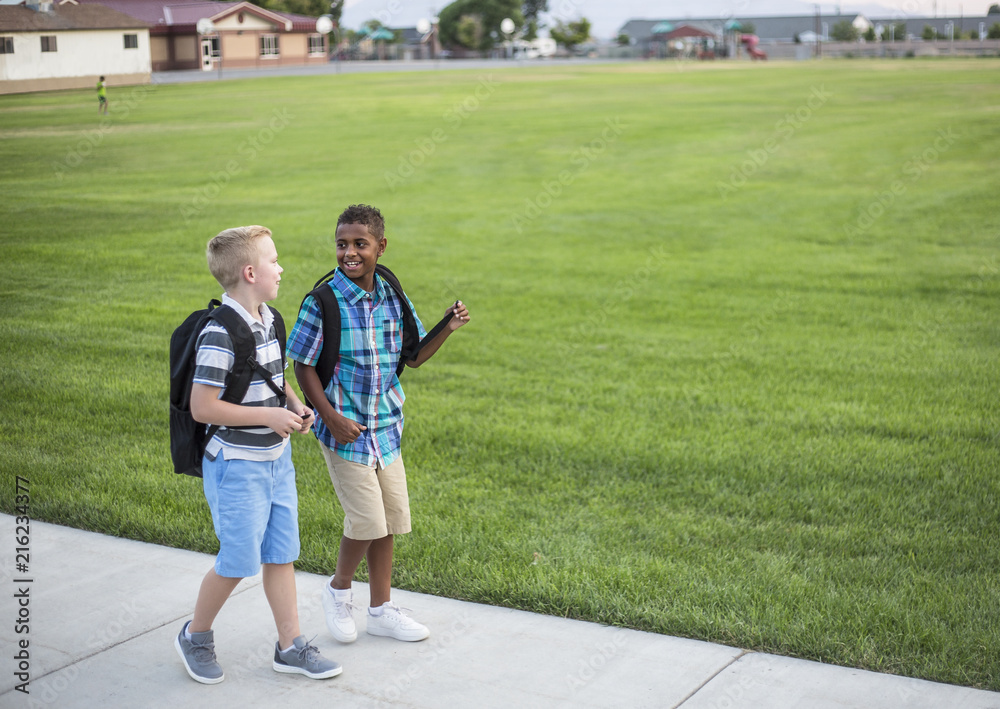
Peace of Mind by Keeping Your Kids Safe Keeping your kids safe is always a top priority. The first day of school brings mixed feelings; safety often worries you. Everyone wakes up early, rushing to beat the morning bell. Yet, once the chaos ends, everything settles into a routine. This continues most weekdays until spring arrives, and everyone is ready for summer break. By the end of summer, however, everyone wants to go back to school and start the routine again. It’s almost like a common form of insanity. Every year, parents and kids hope to do things better than the year before. Ultimately, keeping your kids safe means everything. One thing that should never change, unless for the sake of improving, is teaching and reminding your children about staying safe on their way home from school. If you are a parent who allows your children to walk home or they have to walk home from a bus stop, it is imperative to teach them how they can keep themselves safe. Even if they ride home with a friend or they have to come home to an empty house, equipping them with the proper knowledge keeps them safe and brings you peace of mind. Kids Home Alone? Learn how to Keep them Safe. Being Realistic about Safety We all know the world isn’t always kind. So, teach your kids safety tips that make them aware of danger without scaring them. You don’t have to tell them about abductions or injuries. Instead, simply let them know that some people aren’t nice. If a stranger comes up to your child or tries to pick them up, your child should know something is terribly wrong. Therefore, the buddy system is important. If a child can’t walk home with a friend or neighbor, then enroll them in an after-school program. Alternatively, have a family member or friend pick them up from school. It’s better to be realistic than to worry and just hope nothing bad happens. After School Safety Tips The following are after school safety tips based on the different after school scenarios. These tips will help you make informed decisions about your child’s safety and also give you the tools to effectively talk to them about what they should or shouldn’t do when coming home after school. 1. School Pickup Your child will most likely exit the school to find you in the curbside pickup line or parking lot. If you won’t pick up your child that day, tell them who will be there. If someone other than the designated person tries to pick them up, create a plan. That plan can involve your child calling you to check if the person should be there. Alternatively, your child can go to the school’s office; it’s a safe place. Once in the office, someone can call you or another “safe adult” you’ve chosen. Also, tell your child and anyone picking them up the exact parking spot, if possible. Agree on a meeting time. That way, if your child isn’t at the car by the agreed time, you know something could be wrong. 2. Walking Home If your child needs to walk home from school or a bus stop, work with your child to determine a route so that you know that route. Explain to them that they should never take shortcuts because they could get lost or you could have difficulty finding them in an emergency. Walk the route with your child to show them safe areas along the way. Teach them about crosswalks and watching for uneven sidewalks. If you know anyone who lives along the route, make sure your child knows which house is theirs in case they need to go to them for help. However, while someone may live along the route, that doesn’t mean that person would be home during an emergency. This is why the buddy system, mentioned earlier, is important. It is ideal that a child never walk alone. If other kids in the neighborhood are also walking home, they should all walk together. 3. Home Alone Around the ages of 11 and 12, children can usually start staying home alone after school. This isn’t something that needs to be made public knowledge. Your child should have a key to the house, but it shouldn’t have any identifying information on it such as a “house key” label. If they lose the key, you don’t want a stranger coming to the home and using it to get in. All doors and windows should be locked, the child should know how to set the alarm system, emergency contact information should be in prominent locations, and children shouldn’t answer the door or phone. If answering the phone is necessary, your child should be instructed to say you are “busy” and that you will call them back. Trusted neighbors should know when your child is going to be home alone and for how long. Additional Tips for Keeping Your Kids Safe Other things that you should know about keeping your kids safe include: Don’t write your child’s address on or in their backpack, lunchbox, or on their notebooks. If they would lose one of these items, a criminal could obtain the information. A criminal can also use this information to pretend like they know your child and lure them. Instruct your child to not get into vehicles with people they don’t know. Even if it is to get a ride home with a friend, your child may not know the parent. If they don’t know the parent, you probably don’t either. While walking home from school with a friend is fun, the route may be different and you may not know it in case you have to track your child down. Make sure your child tells you well in advance that they want to walk home with a friend so that you can see the route and so you can make sure your child will be safe at their friend’s

